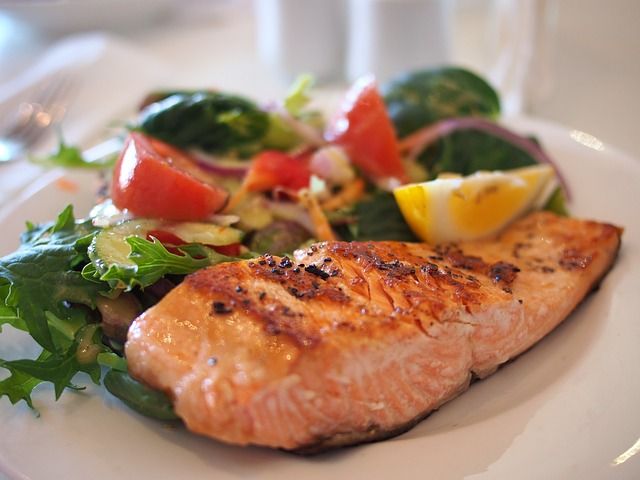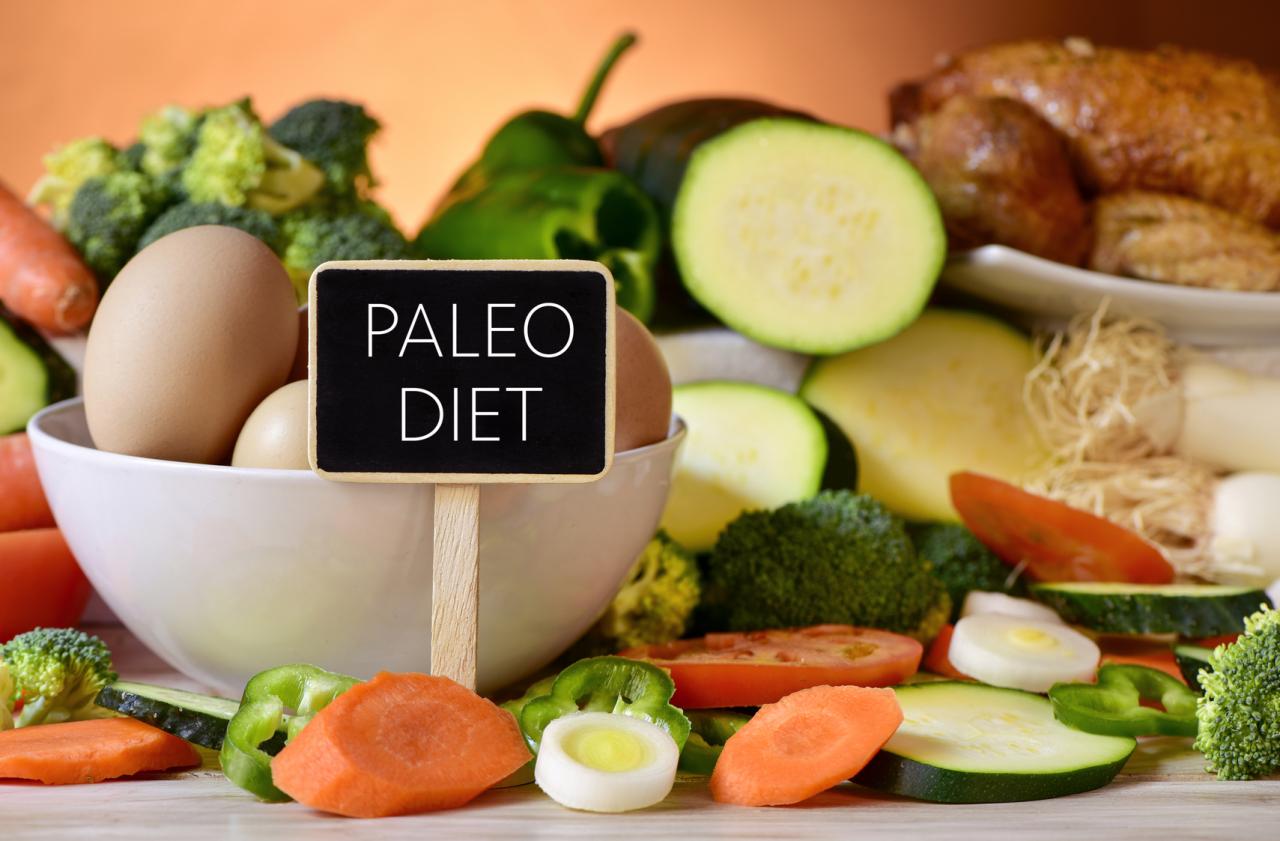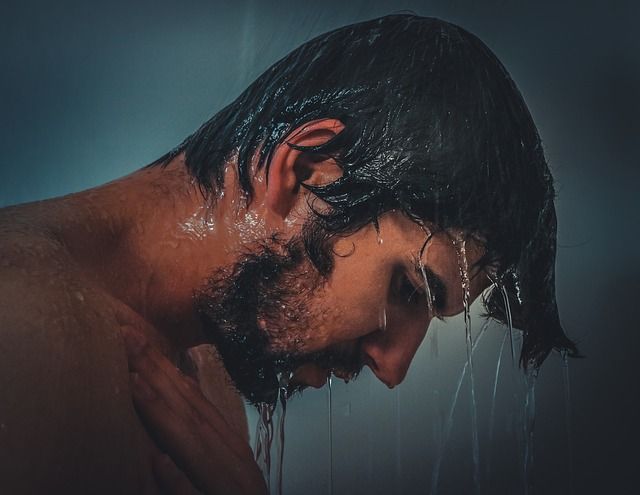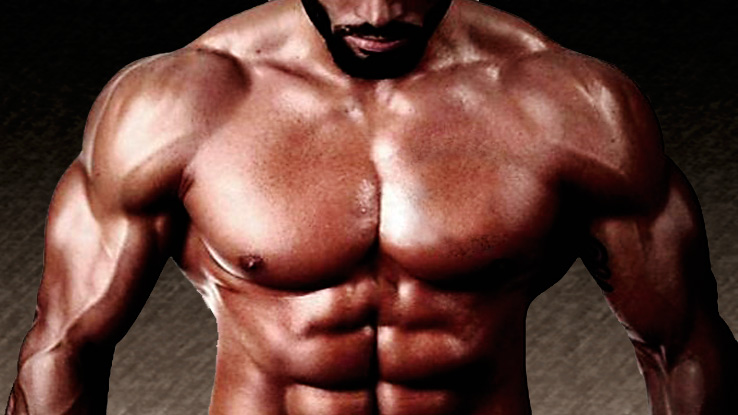In the following interview, Paleo Coach Christian Kollitsch reports on his lifestyle.
He provides information on his dietary changes and questions arise in relation to Paleo, muscle building, better well-being and his future plans.
How did you get to the Paleo diet come?
When I was in my early twenties, I had a lot to do with hay fever. A colleague recommended that I change my diet in order to relieve the strain of the intestines, the “heart” of the immune system. At first, on her recommendation, I left dairy products and later grains off the menu. In fact, my pollen allergy changed for the better . It was crazy!
From then on I was interested in the subject of nutrition from a health point of view and not only with regard to the subject of training, as before. I began to be interested in the interrelationships, in cell health, the intestines, sports nutrition, orthomolecular medicine etc.
I got stuck with the Paleo diet, was not a big one Number in Germany was. But even then you could feel that it was getting bigger!
Eventually I became a nutritionist and guided people in nutrition groups to their desired weight or to more fitness and health. That’s part of my work today.
When do you eat over the day and what?
I have been doing intermittent fasting (IF) for years. That means, I usually don’t eat anything between 14-16 hours . It’s not a big challenge for me, on the contrary, it feels natural to me.
In the morning there is coffee and good. At lunchtime I eat a balanced meal for the first time. At the moment often vegetarian or plant-based, i.e. vegetables, salads, fruit, eggs, nuts, potatoes or even rice. In the evening I then eat another meal, often with proteins, seasonal vegetables, healthy fats and side dishes in line with the Paleo diet.

I currently no longer eat 100% Paleo , but became a “paleo-flexitarian” (laughs). At some point I had the feeling that I no longer wanted to eat meat every day, even if I pay close attention to the quality. On meat-free days, I then eat either fish, eggs or previously fermented or watered legumes, such as green peas or chickpeas. At the moment, this type of diet feels very good for me.
Do you take food supplements? If so, which ones?
If I train intensively, i.e. a whole weekend or almost every day of the week, which often happens in phases where I attend workshops and / or give many courses, I supplement my meals with collagen protein. Then I also take a few BCAA’s for improved muscle and fascia regeneration .
The body then needs a lot of protein that I cannot fully supply via my nutrition plan. I regularly take omega-3 fatty acids, a vitamin B complex, vitamin D and K (only in winter) and now and then vitamin C as a supplement. I’m also currently testing the effect of CBD oil on my regeneration.
Do you have any fixed training routines? If yes, which? If not, what is your training currently like?
Exercise and sport have always played an essential role in my life. As a physiotherapist and group trainer, I have to deal with it every day professionally. I’ve been doing fitness training since I was sixteen. I was a real hardgainer at the time, but was able to quickly gain 5-10 kg mass (from 65 kg to 75 kg later).
But then I couldn’t go any further. I think I unfortunately trained very one-sided for many years. The basis was mostly training on sequence machines in the hypertrophy area with 8-12 repetitions at that time. Plus bench press and pull-ups when it came up. All in all, not very variable, but I didn’t know any better then.
Years later, that has gradually changed. I started kickboxing when I was in my early twenties and did it for a long time. When I was in my late twenties, I “opened up” to many things.
Free training, functional training and movement, or “Movement”, now play the main role in my training and in my work as a physiotherapist. In addition, I am currently exercising a lot in nature and consciously enjoy the time in the countryside.
Bodyweight Training in the forest or park offer me a very varied training experience (depending on the weather, soil , Environment, season).
To do this, the barbell and kettlebells are swung once or twice. In summary, I would describe my training today as much more creative and free. To compensate, I’ve also been doing Aikido for a year, which gives me a lot of energy.

How has the Paleo diet affected your training?
The Paleo diet has long been the cornerstone of my diet. In terms of strength endurance and performance in general, I did not experience any loss with the Paleo Diet , be it in martial arts or strength training. In addition, my body fat percentage was mostly below 17%.
In phases of stress that life and job sometimes bring with it, however, I was then unable to compensate for the calories consumed, so at some point I decided to Paleo diet for me to loosen up. I then built in ” Cheat Days ” and later modified the Paleo diet as I already described it.
Paleo is not a religion for me, but rather a individual way . In order to find this path for yourself, it is important to gain experience with “real” food, that is, to use natural food, to cook and also to do without certain things.
I still wish that many other people set out to gain this experience.
What are you doing actively for your regeneration?
In addition to exercise and nutrition, I consider regeneration to be essential for a healthy lifestyle and success in training. Most people still significantly underestimate the topic of proper relaxation. At least from the people who have only recently started to deal with the topic of training.
A training load without a subsequent recovery phase leads to no change or, without regeneration, no muscle building!
For me it is It is vital to get at least 7-8 hours of sleep at night. This allows the body to secrete enough growth hormones. The clock should always be your own “internal clock”. A good room climate around 16-18 ° C is important at night.
In addition, it makes sense to orientate yourself somewhat to the natural day-night rhythm. That means coming to rest when it gets dark and getting active when the sun rises. Sleep hygiene is really extremely valuable. What works great for me is to use candlelight instead of lamps in the evening.
I also actively use heat applications such as red light, which improve muscle circulation and metabolism. Interestingly, cold has a much better effect. By applying the cold , messenger substances (e.g. irisine) are released in the body, which have a direct positive effect on muscle growth .

A cold one A shower or a bath in ice water therefore directly promotes muscle building.
What has changed most of all in your life as a result of the Paleo lifestyle?
Now, thanks to Paleo, my whole life has changed.
I have practically ” studied ”and looked at many facets related to health and fitness. I founded the Paleo Principle and gave my experiences and the experiences of many other people a platform.
I think I have already been able to reach many people through blogging and writing and give them food for thought can bring. This is a great thing! I have gradually expanded my professional life, from physiotherapist and trainer to nutritionist, speaker, workshop leader and author.
As I already mentioned, I was able to beat my hay fever through the paleo lifestyle. I have even written a guide about this success, which also gives scientifically based dietary recommendations. I’m a little bit proud of that!
What are 5 books that you would like to recommend to your readers? Which books have shaped you very much in the last few years?
The book made it very clear to me how one should orient one’s life in order to become successful and happy. It resonated with me for a long time. You can read it multiple times and learn your lessons for business and life from it.
A very exciting topic, in my opinion, that the author vividly presents with his own theory. If you are interested in anatomy, evolution and biology, this book is a real book. I learned a lot while reading. (Unfortunately only available in use).
A book that gives hope to all concerned and underpins the Paleo idea. Written from practice for practice, the program presented is very understandable and the basis for the autoimmune protocol known in the Paleo scene.
The trainer that Jürgen Klinsmann brought to Germany has fundamentally changed my view of training and therapy this book. A real standard work for everyone who works with athletes or patients. You either love them or you hate them. In my case it was love at first sight back then. The author is a legend in the kettlebell scene and his writing style is notorious. In the English original, his other books are also very informative and entertaining.
To whom would you recommend the Paleo Diet unreservedly? Which groups of people are out of the question for the Paleo diet?
I think that depends very much on a person’s personal goals and resources. What do I mean by that?
Everyone has different requirements and possibilities. I would not recommend a radical change in diet to someone who eats extremely poorly, shows little willingness and interest .
However, someone who is already interested in the topic has positive experiences with healthy eating and has the will to change is in good hands with the Paleo Diet.
Then there are people with health problems and / or diseases. Here the Paleo diet has achieved positive results in various symptoms. Particularly in the area of autoimmune and lifestyle diseases, there have been some amazing successes.
Can you build muscle with Paleo?

Yes, it is possible, but at first it is a bit more complex in terms of preparation.
If you want to build muscle with Paleo, you generally have to pay attention to the total amount of calories. As soon as you consume about 300-500 kcal per day more than before, train properly and regenerate, you will also build muscles in the medium to long term.
Everyone has to do it himself decide what “price” he or she is willing to pay. From my point of view, it makes sense to dose the carbohydrates carefully in any case, even if they are very suitable for building muscle. At the end of the day it can be healthier to build muscle with the Paleo Diet than with an average (” high-carb “) muscle diet.
Which athletes impressed you and why?
As a teenager, I was particularly impressed by German boxers like Henry Maske and Axel Schulz. Later also martial artists and martial artists like Jean Claude Van Damme, Buakaw Banchamek, Jackie Chan or Bruce Lee. In martial arts I have always been fascinated by the art behind it and the Far Eastern philosophy.
In addition, these personalities were all in very good shape and well trained.
At some point I started kickboxing and learned that willpower, discipline, diligence and dedication are required here too to be successful. The respect in this scene is very high among the vast majority of martial artists. In the UFC , the most famous Mixed Martial Arts (MMA) league in the world, you can see today what is possible when talent meets the best coaches in the world.
Despite all the harshness in the ring, most opponents not only have rivalry but also a native respect for their opponents. I still find that attractive. Unfortunately, like in boxing around it, the show is getting bigger and bigger.
Everyone knows Conor McGregor today, who is a gifted martial artist, but is also very well known for his words outside the ring. This “inflation” is entertaining, but sometimes I find a little too much. Whereby McGregor does it very cleverly (laughs).
Which professional project is currently particularly important to you Hearts?
My current heart project are the Paleo Retreats. I have been offering this with the aim of giving people a “real” experience with like-minded people in a great place in addition to imparting knowledge. I have a lot of fun coming into contact with open and attentive people, presenting and discussing my perspective on things. I also take a lot with me on a weekend like this.
Last year the Paleo Retreat took place in the Upper Harz Mountains and it was about the topic of intermittent fasting. This year it goes to the North Sea and again to the Harz. Three Paleo retreats are planned over the year: Natural Movement (Essential Movement), Forest Bathing and Detoxing. These are all topics that have been with me for years and about which I can report a lot and make it tangible.
This year I will also take other speakers and trainer colleagues with me. This makes the Paleo Retreats even richer and more exciting for the participants. I’m really looking forward to it! And Martin, maybe we’ll do a retreat together soon? That would be a great thing for sure!
